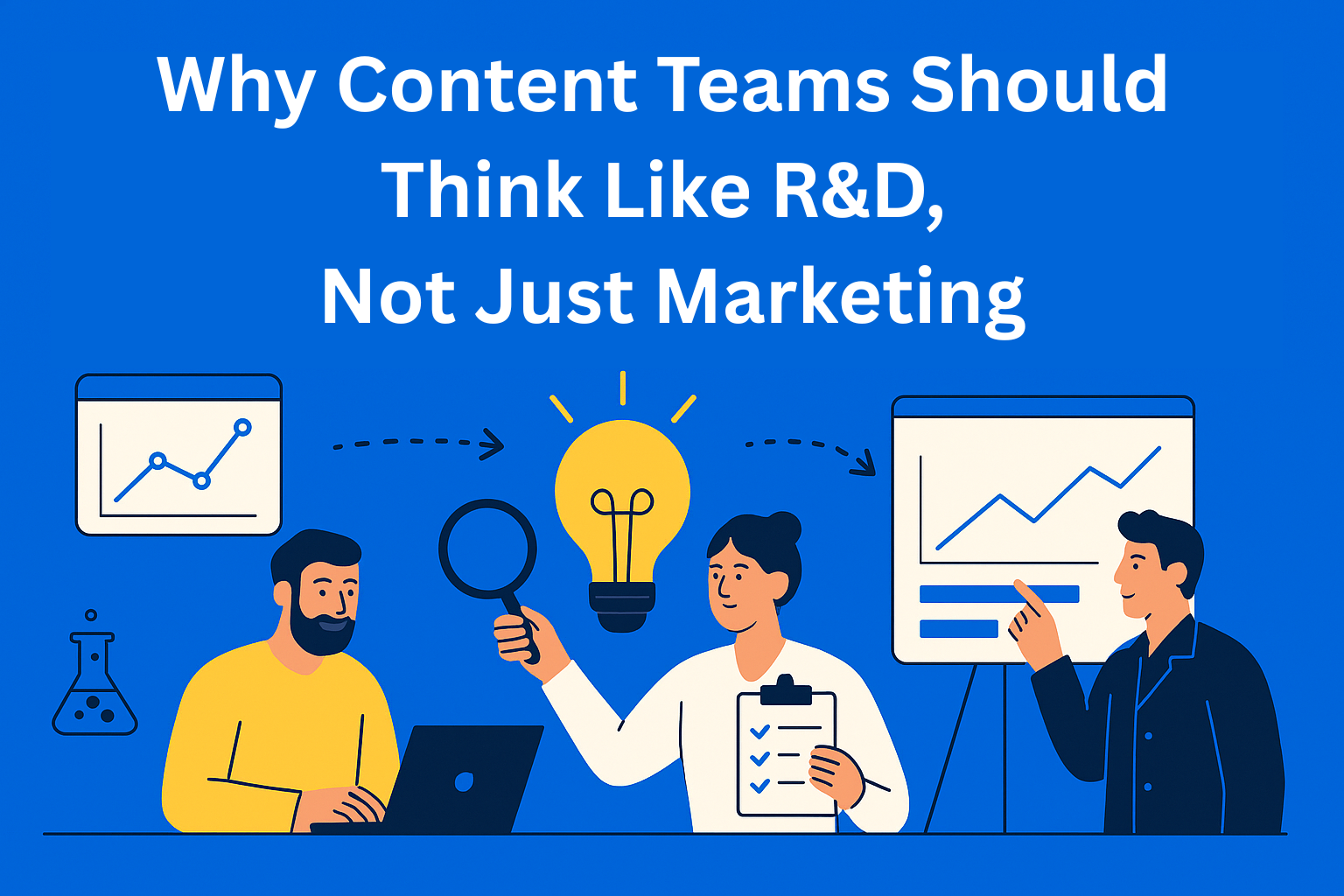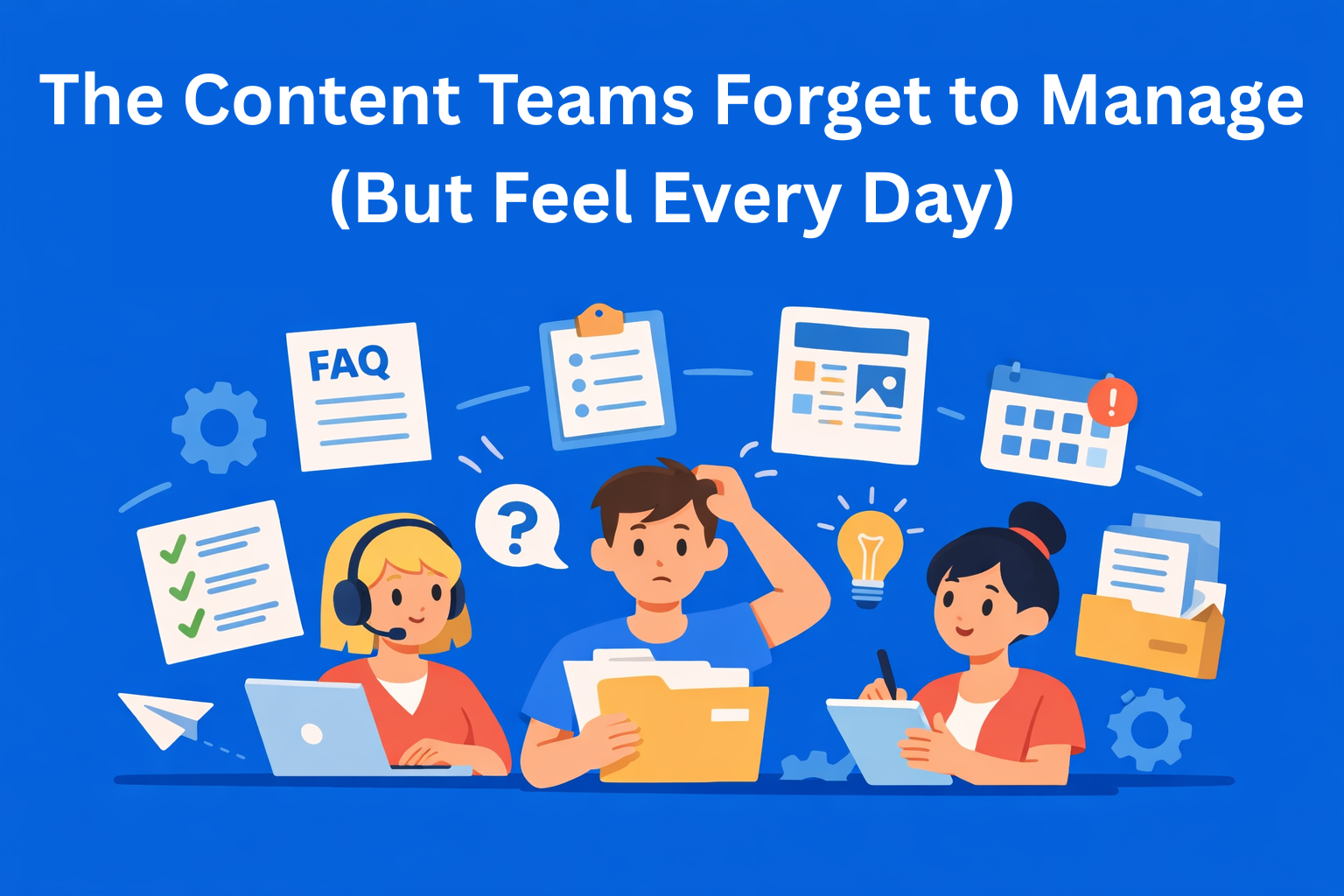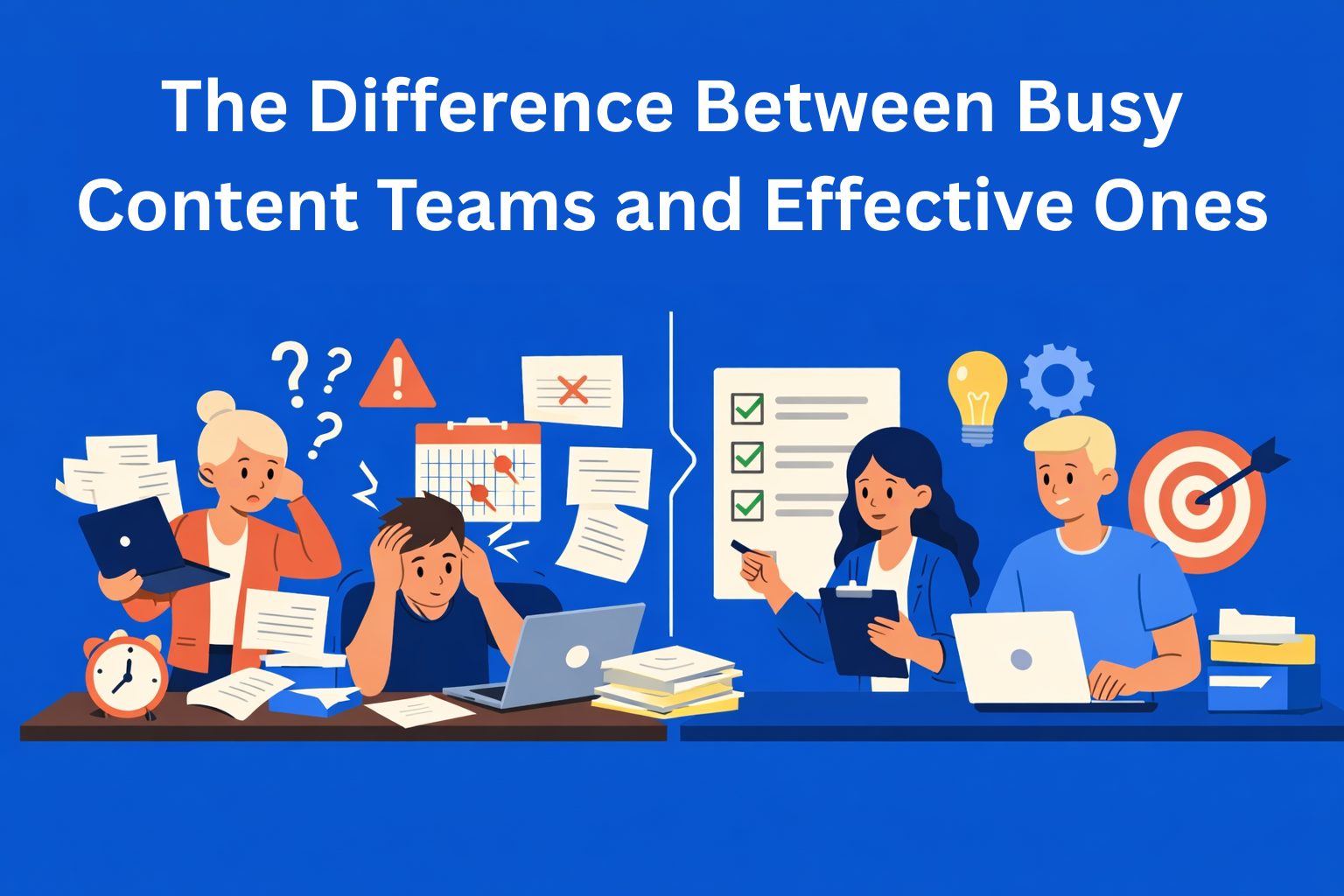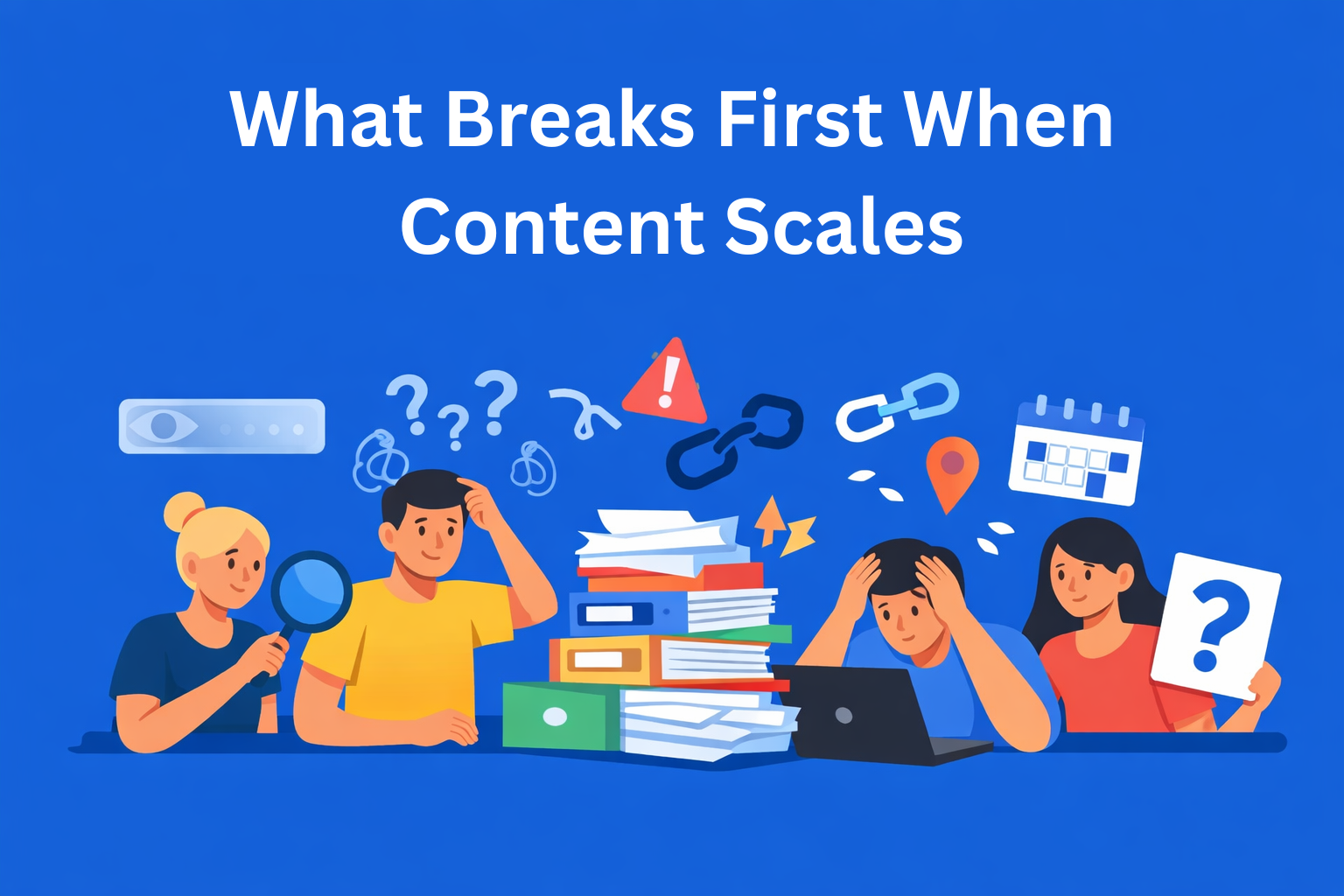Why Content Teams Should Think Like R&D, Not Just Marketing
Content teams that think like R&D don’t create blindly, they test ideas, observe audience behavior, and learn from every piece they publish. This approach turns content into a discovery engine that reveals what the market truly wants and drives stronger business impact.

Good content doesn’t happen by accident. It doesn’t depend on how well you write, how creative you are, or how many times you’ve done something before. More and more content teams are realizing that if you want to create content that truly resonates with your audience, you need to think like a research and development team, not just a marketing machine.
In the traditional marketing world, the focus is usually on delivery: create, publish, move the project forward. But in practice, the teams that actually grow work differently. They test their ideas, observe audience behavior, form hypotheses, and change their approach based on what truly works. That’s why people increasingly say that content is not just distribution, it’s a way to continuously learn and discover what your audience really cares about.
This text walks through why the R&D mindset matters so much and how it can help your content become smarter, more effective, and far more influential within the business.
Key Takeaways
- Content teams grow faster when they think like R&D - experimentation beats guessing and leads to clearer, more effective content.
- Every piece of content is a test - audience behavior reveals what resonates, helping teams make smarter decisions.
- Hypotheses replace assumptions - small tests show what works before investing in big campaigns or long formats.
- Insights reduce revisions - when content is guided by real signals, the team spends less time fixing and more time creating.
- Content becomes a strategic asset - continuous learning supports product, sales, and leadership with real audience understanding.
Content Teams Are Not Just Marketing Machines
For a long time, people believed the role of a content team was to create a text, post, blog, or video and pass it along. Like a factory line, someone requests something, you make it, deliver it, and that’s it. But today’s audience is smarter, the market is faster, and the competition is stronger. That’s why this approach no longer works.
Teams that think like R&D pay more attention to research, not just delivery. They watch what the audience actually does, not just what they say they want. They track signals, learn from metrics, test different approaches, and constantly ask: Why did this work? Why didn’t this work? What should we try next?
This is the key difference between classic production and a real content strategy mindset.
What It Means to Think Like an R&D Team
When someone says “work like R&D,” it often sounds complicated, but the idea is simple: you stop creating content blindly. Instead, you create small experiments that help you learn what your audience truly needs.
The R&D mindset means:
- every idea starts with a simple question you want to test,
- nothing is taken for granted until you see how the audience reacts,
- decisions are made based on clear signals, not assumptions,
- it’s better to constantly improve than chase perfection that slows everything down.
This approach leads to smarter decisions because content is no longer created just to fill the calendar, it’s created to discover what brings the most value. That’s why content teams that think like R&D become much more effective at creating clear messages their audience truly understands.
Content as a Learning Tool
If you see content only as something that needs to be published, your focus stays on pushing out as much as possible. But when you realize content can help you learn about your audience, everything starts to make much more sense.
Content shows you:
- what grabs attention,
- what people don’t understand,
- what motivates them to click,
- which messages trigger the strongest reactions.
This is an incredible source of insight for any company. Once you understand that content reveals how the market thinks, you start using it in a completely different way. Content becomes a simple tool that helps every team in the company gain useful insights.
And that’s where you see why thinking like R&D, and not like traditional marketing, matters so much.
What the Process Looks Like When a Content Team Works Like R&D
To make this clearer, here’s what it looks like when a content team truly operates like R&D.
1. A Hypothesis Is Created
For example: “The audience responds better when we talk about mistakes to avoid rather than when we give advice.” This is the first step in every small experiment.
2. Content Is Created to Test the Hypothesis
It can be a blog, carousel, email, video, or any other form, what matters is that it clearly matches what you want to test.
3. Audience Signals Are Tracked
We don’t look only at likes, what matters is how many people return, how long they read, whether they comment, and whether they click further. This is where content becomes a simple way to learn what truly works for your audience.
4. You Learn What Worked and What Didn’t
This is the moment where the most value is created. Every small experiment adds a piece to the puzzle.
5. A New, Improved Version Is Made Based on What You Learned
When this happens enough times, your content becomes more accurate, clearer, and more effective.
This cycle is the core of real content research and is part of every serious content workflow system that wants to be sustainable.
Why the Traditional Marketing Mindset Limits the Team
The problem with the classic marketing approach is that it focuses on delivery, not on learning. When a team has too many tasks and short deadlines, they almost always skip experimentation. That’s when content becomes generic and predictable.
There are a few more common issues:
- excessive perfectionism that slows everything down,
- untested assumptions about the audience,
- focus on metrics that don’t show real value,
- content that “has to be made,” so it ends up rushed and shallow.
Because of this, many companies create content that the audience scrolls past without engaging. And that means the content provides no useful information, and that’s where the biggest problem appears.
The Advantages of the R&D Approach Within a Company
When a content team thinks like R&D, the perception of its value changes. They are no longer “the people who write,” but the team that discovers what the market needs.
Here’s what improves:
1. Greater Strategic Impact
The team doesn’t just deliver finished materials, they bring insights that help the company make smarter decisions.
2. Faster Learning About the Audience
The team discovers what works much faster, without complicated research.
3. Fewer Revisions and Less Confusion
It’s easier to decide when you’re not relying on assumptions but on real audience behavior.
4. Easier Collaboration With Other Departments
Product and sales teams understand what the audience wants more quickly because content gives them clear signals.
5. Long-Term Value
Content stops being just a cost, it becomes something that continuously contributes to company growth.
This approach helps the team make smarter decisions and create content that has real impact, all thanks to a clearer and more precise content strategy.
How to Shift to an R&D Mindset (Practical Steps)
Here’s what every content team can start doing right away:
1. Introduce Regular Experiments
You don’t need a huge plan to start working like R&D. It’s enough to run one small test each week. For example: change a headline, try a new topic, test a different format or tone. The important thing is to ask yourself each time: What do I want to learn from this content? Over time, these small tests give you a much clearer picture of what your audience truly responds to.
2. Keep a Document With Hypotheses and Results
Instead of keeping everything “in your head,” create a simple document or table. In one column, write the hypothesis (what you’re testing), in the second, the result (what happened), and in the third, the conclusion (what you learned). It doesn’t need to be complicated. The goal is for everyone on the team to see what was already tested and what worked or didn’t.
3. Run Small Tests Before Big Campaigns
Before investing a lot of time and resources into a big campaign, test the core ideas on a small set of content. For example, instead of launching a full series right away, first publish one or two pieces on the topic and watch the reaction. If people respond well, you know it’s worth investing more. If not, better to learn from a small test than a big failure.
4. Connect With Product and Sales Teams
Product and sales teams talk to users and customers all the time. They already know what questions people ask most often, what’s unclear to them, and what problems they have. Instead of having the content team create everything from scratch, it’s much smarter to talk to them regularly. Their insights can directly turn into topics, formats, and messages that make your content much more relevant.
5. Understand That Every Piece of Content Carries Information
Every post, blog, email, or video is an opportunity to learn something. If a piece performs well, that’s a signal. If it performs poorly, that’s also a signal. Instead of seeing content as just another task to publish, treat it as a small message you’re sending to the audience to see how they react. Based on their reactions, you see what feels familiar, what’s useful, and what they ignore. If you view content this way, every post becomes a chance to learn.
This is the essence of a good content workflow approach, content becomes part of a system, not just another task on a list.
Conclusion
When a content team stops working like a production line and starts working like R&D, everything changes. There’s less guessing and more clarity. Less stress and more focus. And most importantly, content finally brings real business value.
This is not a change in tools. This is a change in the way you think.
And once this mindset enters the team, it becomes your biggest advantage.






